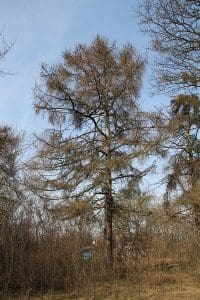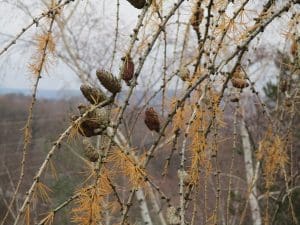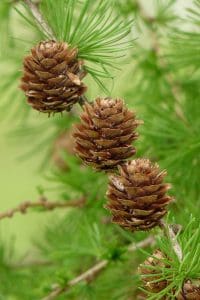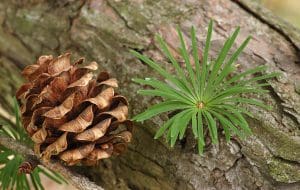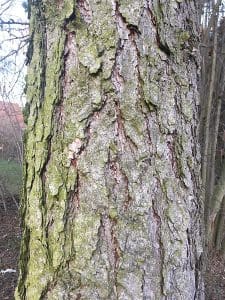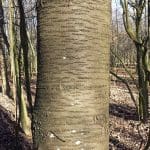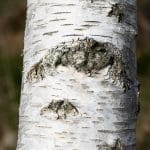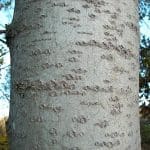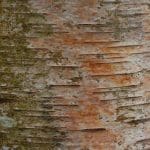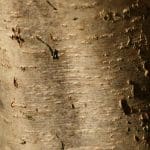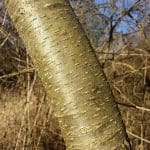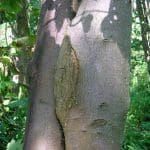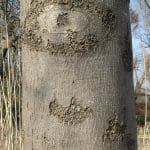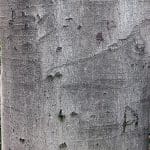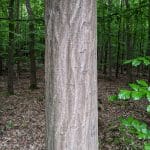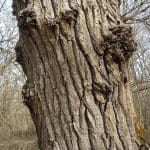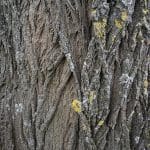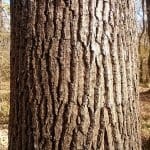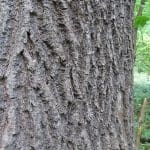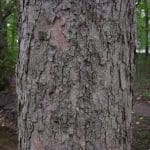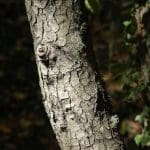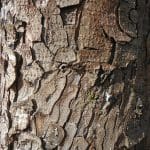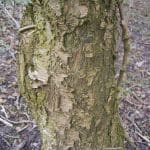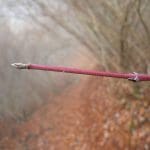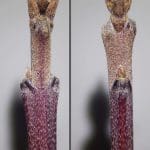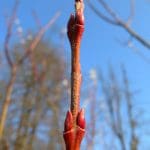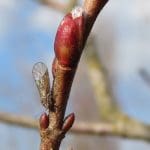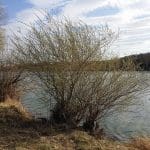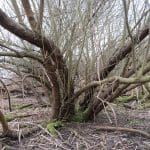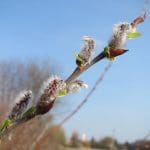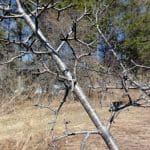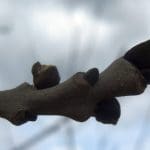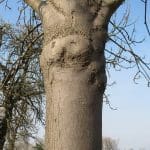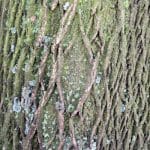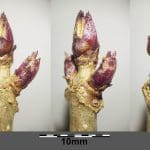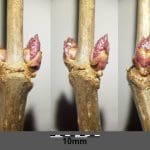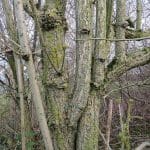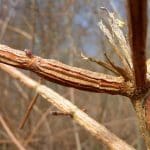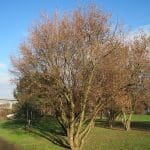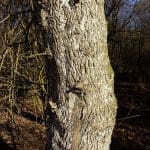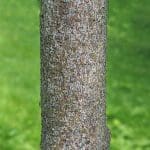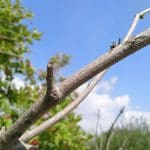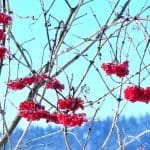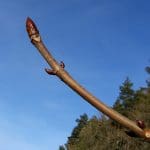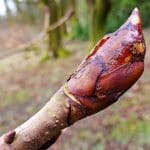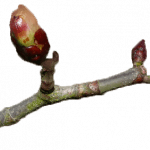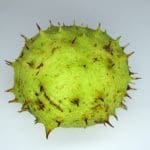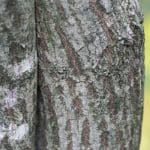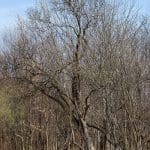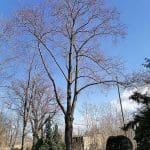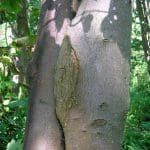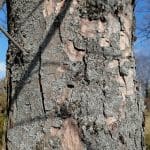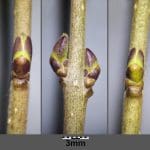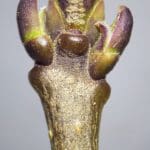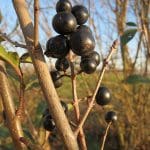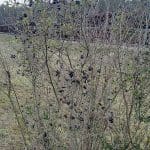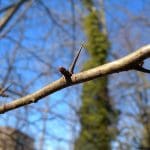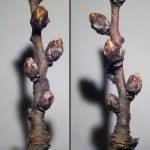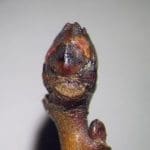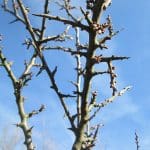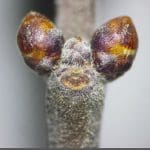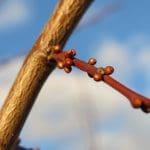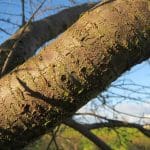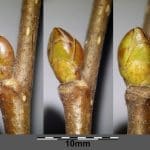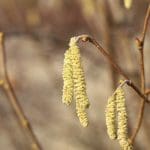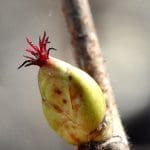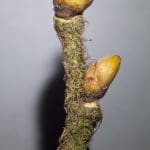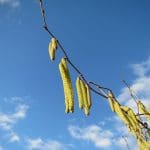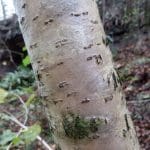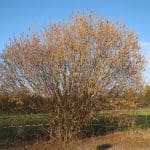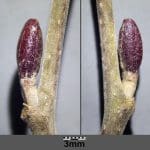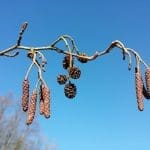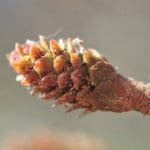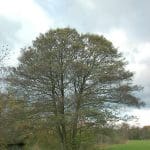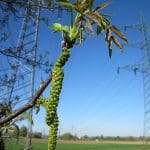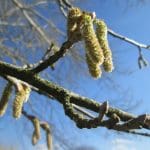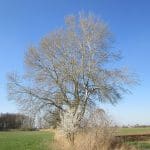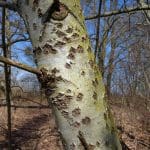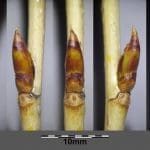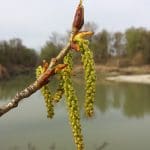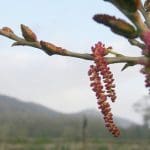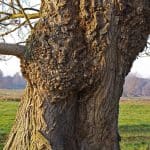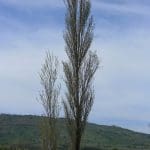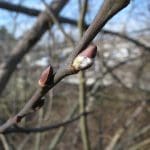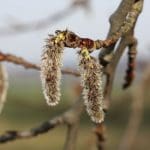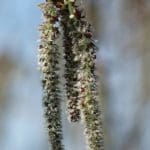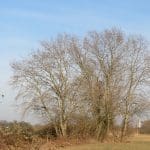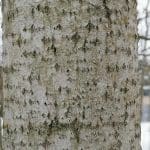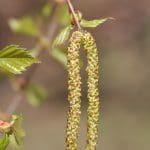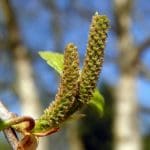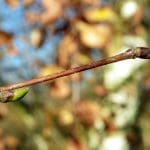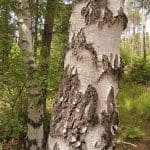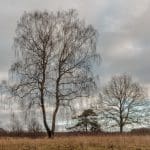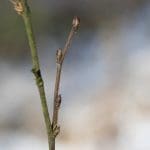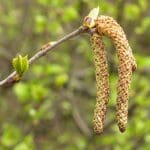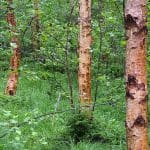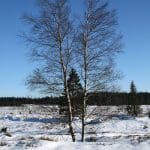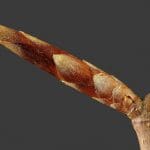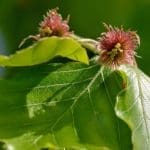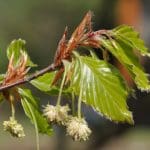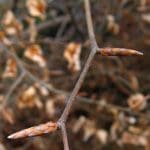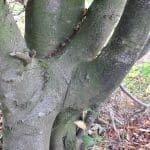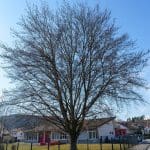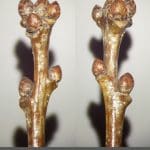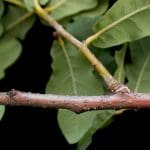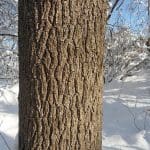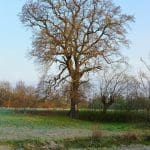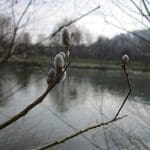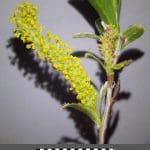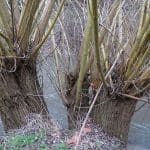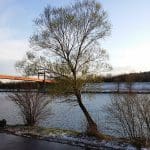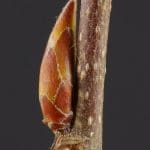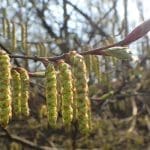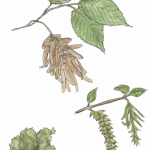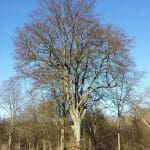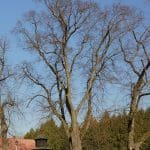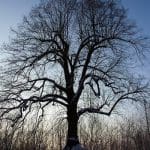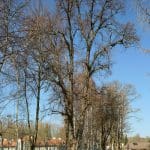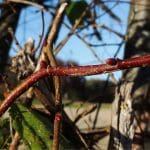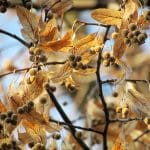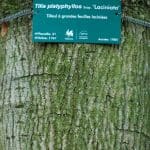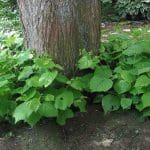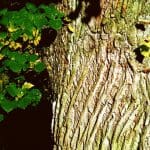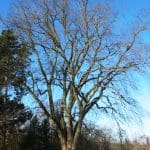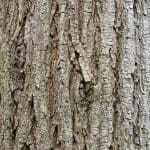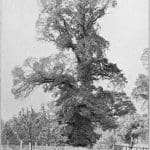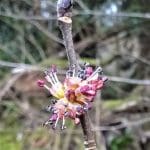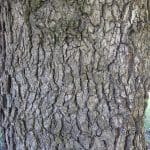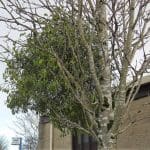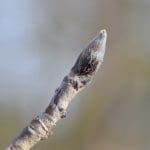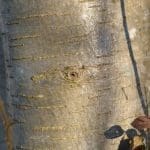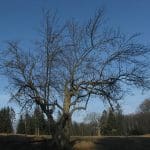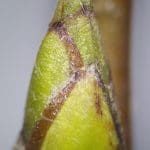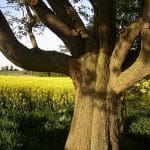Through this piece we will be taking a look at the key ways to help us in Identifying British Trees in Winter
As the vibrant colours of autumn fade away, the British countryside can seem bleak and lifeless during the winter months. However, there is still much beauty to be found in the leafless trees that dot the landscape. In fact, the lack of foliage can make it easier to identify different species of trees by examining their bark, branches, and overall shape. In this guide, we’ll take a closer look at some of the most common British trees and provide tips for recognising them during the winter season. Whether you’re a nature lover, a hiker, or simply curious about the world around you, this guide will help you appreciate the hidden treasures of winter.
This blog refers mainly to deciduous trees because conifers don’t lose their leaves all at once during the winter months – except for the Larch, which is naturalised in the British Isles and is described below.
Trees in this guide are grouped into:
- Trees with opposite buds
- Opposite buds with no scales
- Opposite, adpressed (lying close to the twig) buds with scales
- Opposite buds with scales, not adpressed
- Trees with alternating buds or spiralling buds
- Trees with thorns
- Trees with catkins
- Trees not included in the categories above
Just to avoid confusion later, here’s my description of the European Larch:
European Larch is a deciduous conifer that loses its needles in winter. During the winter it is recognisable by the many cones which adorn its branches.
When open the cones are still quite compact, unlike the Japanese Larch whose scales will curl right back.
This tree can grow up to about 30m and as it gets older can get quite a wide canopy. The bark is greyish brown and sometimes has a pinkish hue. As it gets older the bark develops vertical fissures.
Tree Habits to Help Identifying British Trees in Winter
Most trees have a distinctive outline, sometimes called their ‘habit’, that can be used to identify them, especially from a distance. Some are tall and narrow, some have a crown that spreads.

a) and b) Conical c) Columnar d) Roundish e) Umbrella-like
I’ve included pictures of trees’ habits in their descriptions, but it is important to remember that where a tree is growing can affect its shape; as can human management, such as coppicing, pollarding, hedge management, and general pruning. Trees in woodland often have a narrower crown than trees of the same species growing in a park, where they have room to spread to their full extent. Even in an open space in woodland, it is not always possible to really appreciate the outline of trees.
Bark to help Identify British Trees in Winter
Different tree species also have distinctive bark, which can help in their identification, but this is often something that develops as the tree ages. I can never trust myself to identify a tree correctly by its bark alone and think it’s best to look at the buds and twigs to be more confident. Below are some examples of barks of British trees.
1. Bark with horizontal markings
2. Smooth grey bark
3. Bark with vertical ridges and grooves
4. Bark flaking into plates
These are just some examples that, I think, demonstrate the similarities of the barks of different trees and why I am not always confident in identifying a tree by its bark alone.
But don’t worry because it is possible to identify a tree without leaves just from the branches and twigs.
The main thing to look at in the branches and twigs is the pattern the buds form, the shape, size, and colour of the buds, the structure of the twig, and other features present in some species, such as thorns or catkins.
Buds to help Identify British Trees in Winter
Now (mid to late March at the time of writing) is a good time to learn to identify trees by their buds because it’s not long to wait before the leaves come out, so you can check if you identified them correctly.
Leaf buds start to grow during the summer in the leaf axils so, if a tree has leaves that grow in opposite pairs along the branch then the buds will be in opposite pairs as well. If the leaves grow alternately or spiral around the twig, so will the buds.
Scales
Many buds have scales to protect the leaves, developing inside. Inspect the buds to see what colour they are. Do they have scales and, if so, how many? Are the scales pointed or rounded at the tip and do they have hairs?

In this sycamore bud, c is the cicatrix or scar left by the leaf of the previous year; the scales e, e, are arranged in alternate pairs and overlying each other in what is called an imbricated manner.

Buds in Opposite Pairs
-
without scales
- This is probably either a Dogwood or Wayfaring Tree
Trees with opposite buds and buds with no scales
Dogwood
To confirm identification:
- The twigs are slender and blood red and smooth and may have pale spots. These spots are lenticels, which are pores where the tree exchanges gas with the atmosphere
- The buds are slightly hairy
- The tree/shrub grows to about 4m in scrub or hedgerows

Wayfaring Tree
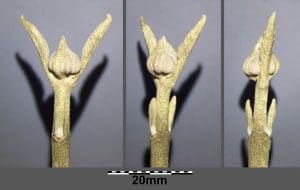
To confirm identification:
- The buds look like velvety fawn ears and are a mustard to grey colour with a mealy coating.
- Twigs are a deep ochre with a mealy white or yellow coating – typically round but can be angled
- Distinctive terminal flower bud
- The tree grows up to 6m tall
- The bark is grey to brown, smooth when young, becoming fissured.
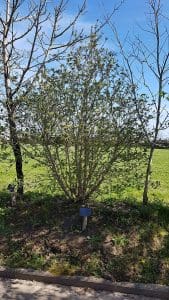
2. Buds in Opposite Pairs
-
buds with scales
-
adpressed buds (held close to the twig)
- This is most likely either a Purple Willow or Buckthorn
-
Purple Willow, Salix purpurea
If only one or two scales are visible it is Purple Willow
To confirm identification:
- The bark is dark grey and shining; it has lenticels but no scaling or fissures
- The young twigs are shining red-purple and more or less hairless
- It grows up to 4m tall and is found in damp conditions, being common in wetland scrub areas.
If you can see more than two bud scales, it is Buckthorn.
Buckthorn

To confirm identification:
- Bark is fissured and scaling on old stems. Peeling back the bark reveals an orange coloured surface
- Twigs are grey or brown
- Habitat: Found in woodlands, scrub and hedgerows on calcareous soils and fen peat.
3. Buds in Opposite Pairs
-
-
-
buds with scales but not adpressed
-
-
This includes:
- Ash, Fraxinus excelsior
- Elder, Sambucus nigra
- Field Maple, Acer campestre
- Guelder Rose, Viburnum opulus
- Horse Chestnut, Aesculus hippocastanum
- Spindle, Euronymus curopeaus
- Sycamore, Acer pseudoplatanus
- Wild Privet, Ligustrum vulgare
Ash, Fraxinus excelsior
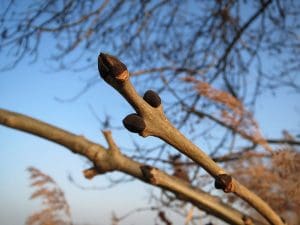
To confirm:
- Buds: The buds are hard and black.
- Bark: The bark is grey and smooth when young; soon acquiring shallow vertical fissures
- Twigs: The twigs are a pale, slightly greenish grey, and flattened around the buds
- Height: Reaching 25 metres or more
- Habitat: various but not in poor or acidic soils; common in woods and scrub
- Other: The lower branches tend to curve downwards and then turn up at the tip
You can find our full identification guide for Ash with edible and medicinal uses here.
Elder
To confirm:
- Buds: Buds are ragged, often with leaves showing through broken bud scales
- Bark: Corky in texture. Pale yellowish-brown with prominent lenticels on young stems; deeply fissured, softly curly, grey-brown on older specimens.
- Habitat: commonly found in disturbed areas and is often low and bushy; typically found in woods, scrub hedges
- Other: resistant to grazing, possibly because of its unpleasant smell – this is particularly noticeable when the stem is crushed.
Please find our complete identification guide for Elder, with edible and medicinal uses here.
Field Maple

To confirm:
- Buds: Bud scales hairy. Two single-seeded winged fruits, called keys.
- Bark: Light brown, smooth at first, becoming darker and furrowed, with small scales that flake off.
- Twigs: Pale brown, hairy; after a year or so they develop a layer of cork outwards in conspicuous irregular vertical ridges
- Height: Occasionally reaching 25 metres
- Habitat: Typically a small shrub or hedge
Guelder Rose

To confirm
- Buds: Slender, reddish
- Twigs: angled, greyish, hairless
- Height: Rarely exceeding 4 metres in height
- Habitat: Often found in woodlands, scrub, and hedges; common in south of Britain
- Other: Often found with clusters of red berries
Horse Chestnut, Aesculus hippocastanum
To confirm:
- Buds: Buds are sticky and below each bud there is a distinct horse-shoe-shaped leaf scar.
- Seeds: Conkers – in a thickened, often spiny case
- Bark: reddish-brown or dark grey-brown, flaking into long plates whose ends rise away from the trunk
- Twigs: Reddish-brown with pale lenticels
- Habitat: Since the 17th century has been grown in ornamental avenues of trees for their candles of flowers; also planted in parks, churchyards and village greens. They grow rapidly on most soils but require plenty of space.
- Other: the large winter buds are very sticky; reddish brown
Please find our full identification guide for Horse Chestnut, with edible and medicinal uses here.
Spindle, Euronymus curopeaus

To confirm
- Buds: Buds and twigs distinctly green; terminal and lateral buds singular
- Bark: smooth grey becoming shallowly fissured and tinged pink with age
- Twigs: green and angled
- Height: common in hedgerows and thickets on lime-rich soils
- Other: can be poisonous to livestock
Sycamore, Acer pseudoplatanus
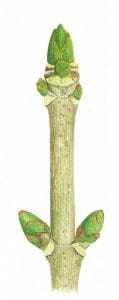
Sycamore-Acer_pseudoplatanus_buds-G.Bernetti-EUFORGEN-CC-BY-SA-4.0-via-Wikimedia-Commons To confirm:
- Buds: Green, terminal bud single
- Bark: Smooth, grey, later scaling to reveal buff or orange underside
- Twigs: Young green paired twigs turn light brown during first year
- Height: able to reach 30 metres or more with a broadly rounded crown
- Other: Introduced in the fifteenth century.
Wild Privet, Ligustrum vulgare
To confirm:
- Buds: Egg-shaped and dumpy. Dark brown to green scales with a thin pale margin. Mostly staggered but some perfectly opposite
- Bark: Reddish brown with vertical gashes on older shrubs. Often covered in algae
- Twigs: Straight and very round, characteristically growing upwards. Young twigs are downy. Brittle and typically covered in pale lenticels
- Habitat: Spreading shrub often in hedgerows but also in the understorey of calcareous woodlands. Very branched, semi-evergreen. Small black berries persist into January.
Mix of Opposite/Staggered and single: Buckthorn, Alder Buckthorn
4. Buds alternating or spiralling
Some of these have features that help narrow things down a bit more such as the presence of thorns. Thorns will point to the tree being Hawthorn, Blackthorn or Cherry Plum, which is technically a cultivated tree, which sometimes escapes into the wild.
Hawthorn and Blackthorn are often planted as a hedge and, as they both have thorns, can be difficult to tell apart in winter.
Trees with Thorns
Hawthorn, Crataegus monogyna
Hawthorn twigs are usually shiny, with thorns up to 2cm long. The buds are hairless, spreading away from the twig and the leaf scar below the bud looks like a smiling face
Hawthorn’s bark is green-greyish brown, smooth when young, gradually becoming a darker grey and cracking into orange-brown rectangles.
When allowed to grow into a tree, rather than trimmed regularly as part of a hedge, Hawthorn can grow up to 15m
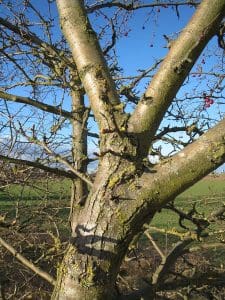
You can find our full identification guide for Hawthorn, with edible and medicinal uses here.
Blackthorn, Prunus spinosa
Blackthorn twigs are not shiny but often hairy, with thorns usually more than 2cm long and held at right angles.
The buds are hairy, more adpressed to the twig and the leaf scar below the bud looks like a face sucking a lemon! Buds are often found along the spines.
The bark is dark (hence the name Blackthorn) – almost purplish. In older trees, the bark may be broken into small square plates.
When left to grow into a tree Blackthorn can reach up to 4m tall. Blackthorn spreads by suckers.

You can find our full identification guide for Blackthorn, with edible and medicinal uses here.
Cherry Plum
Cherry Plum buds grow in clusters away from the spines.
The bark is dark brown with horizontal rows of lenticels. The tree can grow up to 8 metres.
Another clue for these three thorned trees can often be found if there are old fruit left on branches from the previous Autumn.
You can find our full identification guide for Cherry Plum, with medicinal and edible uses here.
Another feature found on trees are catkins.
Trees with Catkins to help Identifying British Trees in Winter
These are elongated clusters of single-sex flowers bearing scaly bracts and usually lacking petals. Catkins may be erect or pendulous and are often somewhat inconspicuous.
Many catkins appear over winter, even as early as December and are easy to spot on the otherwise bare branches. Many release pollen before the leaves appear because leaves can get in the way and prevent the pollen from male catkins reaching the female catkins. The time of flowering depends on the weather but, as a rough guide, you can expect to see catkins swelling and flowering at the following times of year:
In many of these plants, only the male flowers form catkins, and the female flowers are single (hazel, oak), a cone (alder), In other plants (such as poplar), both male and female flowers are borne in catkins.[citation needed]
Hazel, Corylus Avellana
- Buds: Green to reddish brown, flattened
- Catkins:
- Twigs: Slightly zigzagged. Pale brown, softly furry when young, older twigs retaining hairs at the shoot tip
- Bark: Smooth and shiny from grey to reddish brown with conspicuous horizontal lenticels
- Habit: Common hedgerow shrub and as undergrowth in a wood or copse. Often coppiced and spreads by suckering, producing many stems
Please find our full identification guide for Hazel, with edible and medicinal uses here.
Alder, Alnus glutinosa
- Buds: Reddish-purple, often with a fine orange line running longitudinally (these are glands); short stalks; boxing glove shaped
- Catkins: Male catkins and female cones – fruiting flowers which become black and shed nutlets during winter
- Twigs: Green to ochre to rich purplish brown with raised orange lenticels
- Bark: Purplish brown and smooth when young, aging to dark grey-brown with fissures, eventually cracking into vertical plates
POPLARS
Poplars are a difficult group – some hybrids between species may be found.
- Twigs: ribbed or angular in profile; very knobbly – especially in older twigs, as a result of being swollen around old leaf scars
- Buds: many scaled and alternately arranged
- Branches: arranged at random and irregularly
White Poplar, Populus alba
- Buds: Twig and bud scales hairy. Terminal and lateral buds less than 6mm long
- Twigs: Young twigs and winter buds are covered with a white dense felt
- Bark: Smooth greyish-white, with a greenish tinge, slowly becoming blackened towards the base of the tree; the bark is patterned with rows of rhomboid lenticels
- Habit: Able to grow up to 25m tall
- Habitat: roadsides, parks, and gardens. Freely suckering
Black Poplar, Populus nigra
- Buds: The winter buds are shiny chestnut brown, very angular, and typically 7mm, lying flat against the twig
- Twigs: Slender at first, becoming chunky and angular
- Catkins: Male catkins are 5cm long, grey at first becoming crimson – each with 20 – 30 stamens. Female catkins are greenish, 6 – 7cm long in flower, and 10-15cm long in fruit.
- Bark: Pale grey-brown, deeply rugged and fissured with large knobbly bosses and burrs on a relatively short trunk.
There are less than 3,000 Black Poplars remaining in Britain and nearly all are close to the end of their natural life span.
Aspen, Populus tremula
- Buds: dark brown, lying flat against the stem, sharply pointed but bud scales are rounded. Terminal bud often plump
- Twigs: Young green shoots become golden-brown then darker
- Catkins: Male and female catkins are found on different trees. Male catkins are brown with red anthers, up to 12cm long turning yellow with pollen. Female catkins are shorter than the male catkins
- Bark: Pale grey/cream with horizontal rows of diamond-shaped pores. Develops brown fissures with age.
Silver Birch, Betula pendula
- Buds: Slender and pointed, at least as long as they are wide
- Twigs: Terminal twigs are never hairy; always with whitish warts
- Catkins: The male catkins are 3 – 6cm long, in groups of 2 – 4 at the tips of small twigs, brownish in winter, becoming yellowish and maturing with the young leaves. The female catkins are borne in the axils of leaves, greenish at first, becoming brown. The fruiting catkins are 1.5 – 3.5cm long; the scales have two broad, curved lateral lobes and a triangular central lobe.
- Bark: Silver-white, peeling and papery. On older trees bark tends to be rough, often deeply fissured at the base forming small black knobbly plates.
- Habit: Up to 30m tall with a narrow, pointed crown when young, becoming broader with age. The branches are erect on young trees, becoming pendulous with age.
Please find our full identification guide to Silver Birch, with edible and medicinal uses here.
Downy Birch, Betula pubescens
- Buds: Slender and pointed, at least as long as they are wide
- Twigs: Terminal twigs are often hairy; never with whitish warts
- Catkins: similar to Silver Birch
- Bark: Silver-grey, often brownish. Smooth with faint patterning – never with black diamonds
- Habitat: Up to 25m tall
Beech, Fagus sylvatica
- Buds: Long and slender, tapering to a relatively sharp point, spreading away from the twig – never adpressed. Scales are large and copper-coloured, eventually developing a whitish tip
- Twigs: Thin, reddish-brown, often zigzagging. Young twigs may have a few long hairs. Small, pale spots (lenticels) usually abundant.
- Catkins: Male catkins are long stalked, numerous, carried in terminal clusters. Female flowers usually occur in pairs on a short stalk.
- Bark: Smooth and grey. Older trees develop horizontal wrinkles then criss-crossing ridges and furrows.
You can find our full identification guide for beech with edible and medicinal uses here.
Oak
- Buds: Dark red-brown, few scales (usually less than 20). At least three terminal buds
- Twigs: Grey-brown with pale buff lenticels
- Catkins: Male flowers are slender, pendant, many-flowered catkins. Female flowers few-flowered catkins.
- Bark: Smooth at first, later becoming rugged giving a fissured grey trunk – sometimes producing epicormic growth (growth of new shoots from epicormic buds that lie dormant beneath the bark in response to stress)
- Habit: Broad crowned tree reaching 30 metres.
Please find our full identification guide for Oak, with edible and medicinal uses here.
White willow, Salix alba
- Buds: Covered in greyish white hairs
- Twigs: Young twigs are olive-brown, with silky white hair
- Catkins: Male catkins are most abundant, 7 – 8cm long, curved upwards, yellow with 2 stamens. Female catkins are 4 – 6cm long, green, soon becoming white with seeds.
- Bark: Dark grey with thick fissures and shallow ridges forming a closed network
- Habitat: Willows are plants of wet places and especially stream sides
- Habit: May reach a height of 25 metres; its narrow lower shaped crown and ascending branches are silver-grey
Hornbeam, Carpinus betulus
- Buds: Slightly curled or pressed against the stem. Scales green with brown edges. Usually ribbed nutlets hanging in clusters
- Twigs: Brown and sparsely hairy
- Catkins: Hornbeam is monoecious, meaning male and female catkins are found on the same tree. Female catkins open in spring and develop into papery green winged fruits (Samaras) that hang in tiered clusters through autumn
- Bark: Smooth and grey with a network of smooth metallic-blue striations
- Habitat: A native of south-east and Midland counties of England and possibly Wales. A line drawn from Worcestershire to Norfolk roughly marks its natural limit.
- Habit: Able to grow to 25m but is commonly coppiced or pollarded.
Identifying British Trees in Winter that don’t fall into the categories above
- Limes, Tilia spp
- Wych Elm, Ulmus glabra
- English Elm, Ulmus procera
- Rowan, Sorbus aucuparia
- Whitebeam, Sorbus aria
Limes, Tilia spp
There are three species of Lime – Large Leaved Lime, Small Leaved Lime and Common Lime; collectively known as Linden trees.
Common Lime is a hybrid of Large Leaved Lime and Small Leaved Lime and is widely planted as an ornamental or shade tree and in many regions is more abundant than either parent.
When they are in leaf, it is possible to recognise the species, partly by the size of the leaves and also by the underside of the leaf. Common Lime Tilia x vulgaris has tufts of white hairs between the vein joints, whereas these are rusty red in small-leaved lime Tilia cordata. Large-leaved lime, Tilia platyphyllos has hairs all over the underside.
In winter twigs are often found with fruit still present on the twigs.
The buds of Small Leaved Lime are smaller than the other two species – less than 4mm long, whereas Large Leaved and Common Lime buds are more than 4mm long.
There are noticeable differences between the twigs in colour and shape:
- Large Leaved Lime: Grey and sparsely if at all hairy (no image available)
- Common Lime: Red to dull crimson and strongly zigzagged in new growth and hairy, especially at the tip
- Small Leaved Lime: Brownish-red above and olive-green below; downwardly arched and smooth.
- The bark of the Large Leaved Lime is dark grey, finely fissured (sometimes ribbed)
- The bark of Common Lime is smooth and greyish-green with darker markings, eventually becoming rough and fissured. Epicormic growth is common (growth of new shoots from epicormic buds that lie dormant beneath the bark)
- The bark of Small Leaved Lime is smooth and grey when young becoming dark grey or brown, much cracked into shallow plates.
You can find our full identification guide for Common Lime, with edible and medicinal uses here.
Wych Elm, Ulmus glabra
- Buds: Chocolate brown. More than 3mm long. Stout and densely covered in orange hairs
- Twigs: Dark red-brown, hairy when young but smooth by third year. They branch from the stem at a 90 degree angle.
- Bark: Young growth smooth and silvery; becomes dull grey and finely cracked and eventually browner and ridged until deeply networked with broad ridges.
- Habit: Large, spreading. Can grow to 35 metres.
English Elm, Ulmus procera
- Buds: Red to dark brown. Slender, sparsely hairy, less than 3mm long
- Twigs: Shoots branch out from the stem at a 60 degree angle and some have a curly growth.
- Bark: The dark grey-brown bark is smooth at first, becoming fissured into small squares with age.
- Habit: A domed tree able to grow up to 35 metres high; often found suckering
Rowan, Sorbus aucuparia
- Buds: Purplish-brown, conical. Whole of bud scale, including edges, hairy. Far apart on twig
- Twigs: Upward growing, grey or sometimes shiny brown, very smooth, though young twigs usually have some long hairs
- Bark: Smooth grey bark, scarred horizontally as though it has been scored with a knife
- Habit: Grows up to 16 metres tall. Branches tend to grow upwards.
Please find our full identification guide for Rowan, with edible and medicinal uses here.
Whitebeam, Sorbus aria
- Buds: Only edges of the bud scales are hairy
- Twigs: Dull purplish-grey, pubescent at first, becoming glabrous
- Bark: Silvery to brown. Smooth at first, becoming networked by a pattern of thin scaly ridges
- Habit: Can grow up to 25 metres in height.
Through this article we’ve taken a deep dive in to the tips and tricks on how to identify british trees in winter, from their bark to buds & general shape, you have to imagine you’re a detective using the information you have to hand in order to figure out which tree sits there infront of you.
This isn’t all the deciduous trees that are native to the UK and there are also a lot of exotic species that have escaped into the wild.
But hopefully, this will help narrow things down a bit.



